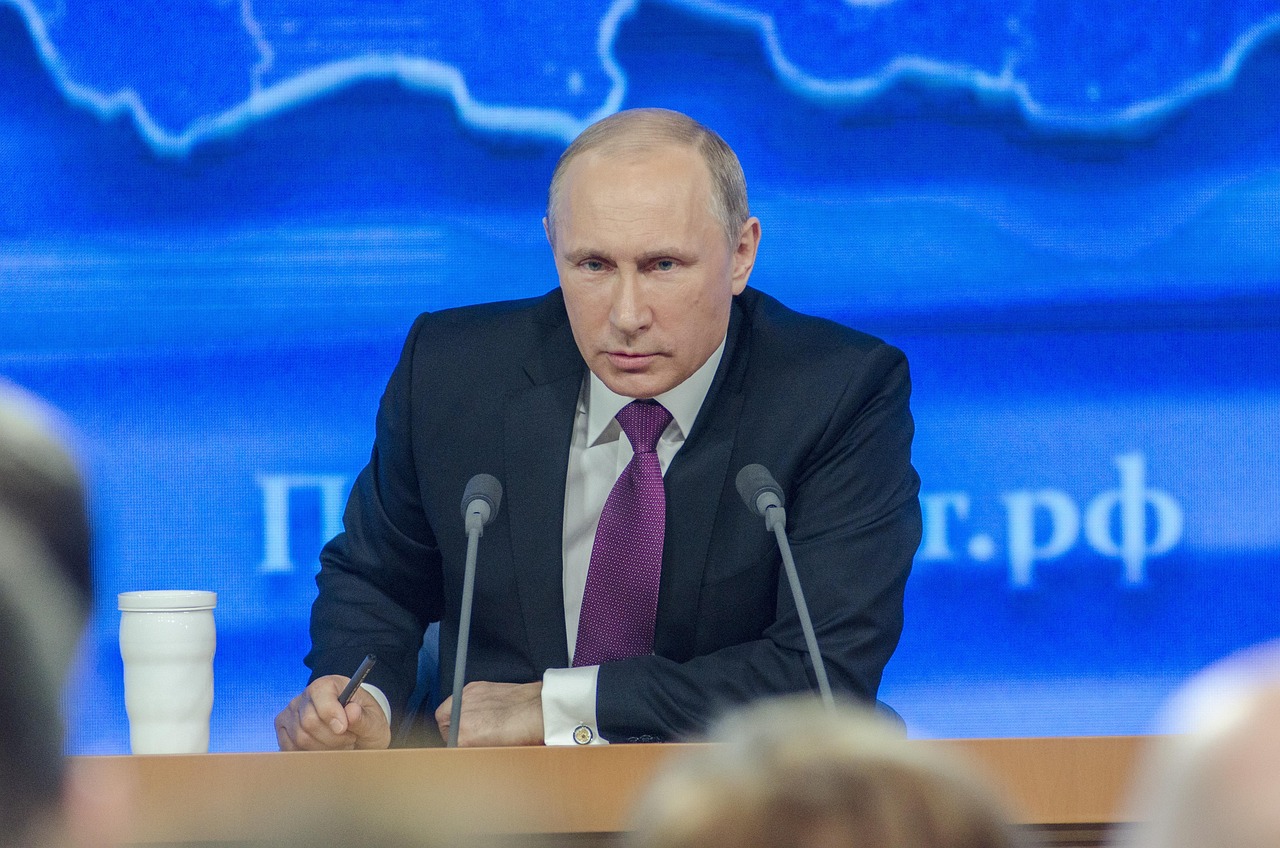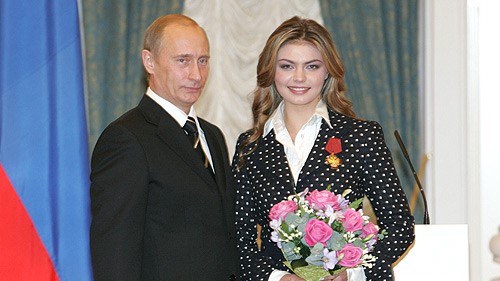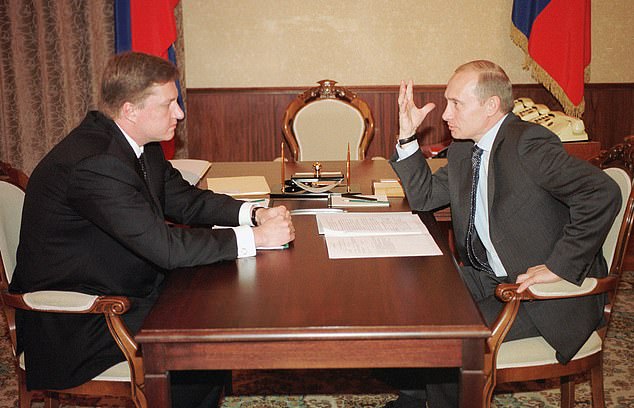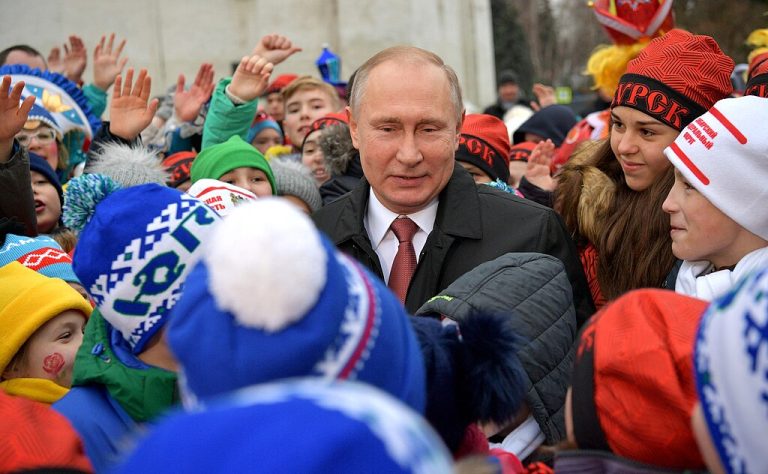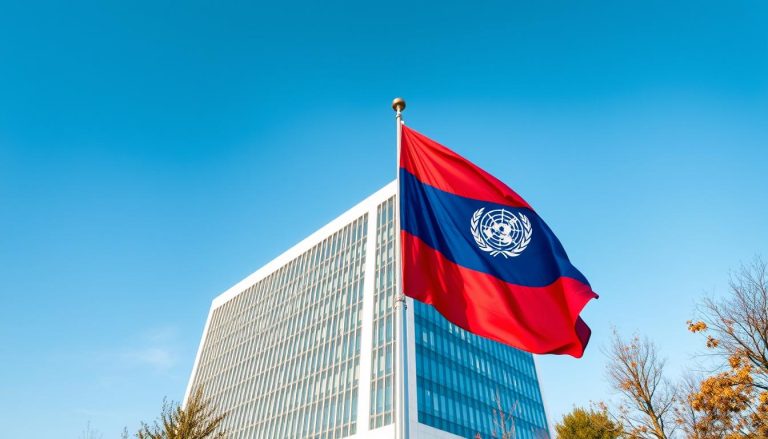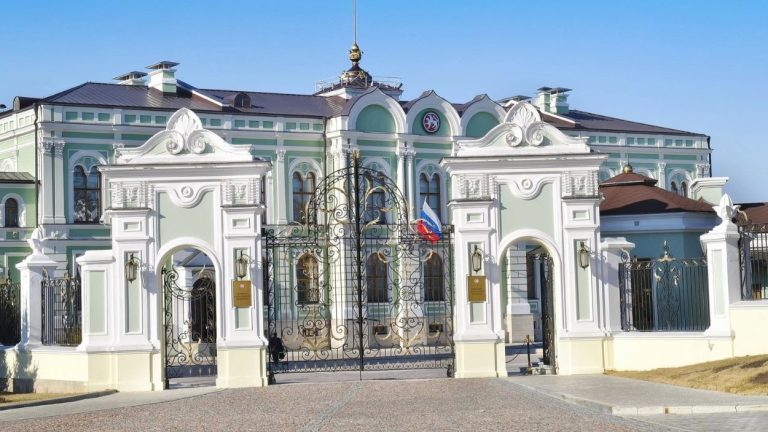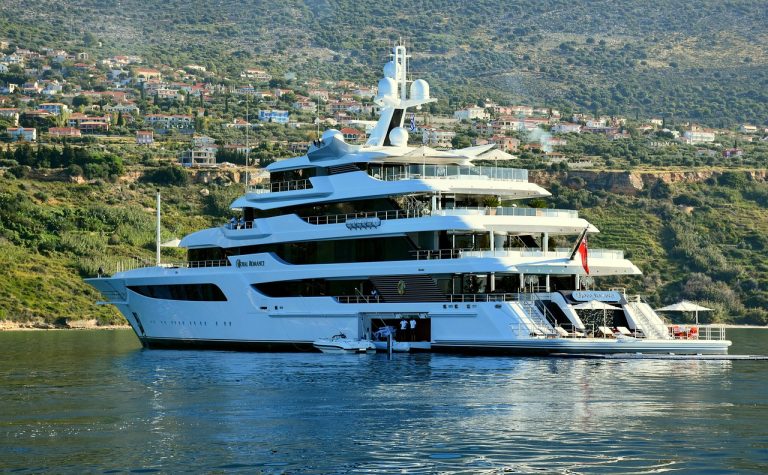Vladimir Putin identifies as a Russian Orthodox Christian. He has openly shared this faith throughout his career. Born on October 7, 1952, in Leningrad—now Saint Petersburg—he grew up in a time when the Soviet Union was officially atheist.
Despite the ban on religion, his mother Maria Ivanovna secretly baptized him as an infant. The Soviet government worked hard to suppress faith and punish believers.
Yet, Maria’s dedication to Christianity allowed her son to receive the sacrament in secret.
When Putin became president in 2000, he made his Orthodox faith a key part of his rule. His partnership with the Russian Orthodox Church has influenced his policies at home and abroad. This spiritual aspect sets him apart from his Soviet predecessors.
What Religion is Putin? The Russian President’s Faith
The religion of the Russian president has changed a lot in the last 30 years. Putin now openly says he is a Russian Orthodox Christian. This change shows how Russian society has changed after the Soviet Union fell.
His faith affects his decisions and how Russia is seen by the world. This shift is important for both Russia’s internal politics and its relations with other countries.
Putin Identifies as Russian Orthodox Christian
Putin was baptized as a baby in the 1950s, even though the Communist Party didn’t believe in religion. His mother secretly had him baptized, hiding it from his father, a Communist Party member. This secret was kept hidden until Putin talked about it in the late 1990s.
The aluminum baptismal cross Putin wears shows his faith. His mother gave it to him before she went to Jerusalem in 1993. Putin always wears it, even under his clothes.
In 1993, a fire destroyed Putin’s dacha outside Moscow. The only thing left was a small icon. Putin saw this as a sign from God, strengthening his faith during tough times.
The Public Face of Putin’s Religious Identity
Putin showed his Christian faith in 2001 when he met then-President George W. Bush. He took out his baptismal cross, talking about his mother’s influence on his faith. Bush wrote in his book Decision Points that this impressed him.
Putin’s daily life includes prayer, according to those close to him. He has a chapel near his office for private prayer. This shows his faith goes beyond public appearances.
Archimandrite Tikhon, the Father Superior of Sretensky Monastery in Moscow, is Putin’s spiritual advisor. Tikhon knows a lot about Putin’s personal life and thoughts. He helps Putin with decisions on religious and cultural issues.
Why Putin’s Religion Matters on the World Stage
Putin’s faith affects Russia’s foreign policy. Russia sees itself as a protector of traditional Christian values against Western decline. This message appeals to conservatives in Europe and North America, creating unexpected alliances.
Putin’s beliefs guide Russia’s actions in places where religion and politics mix. In Syria, Russia helped Christians and other minorities. In Ukraine, Moscow claimed to protect Orthodox believers, though this is disputed.
At home, Putin’s faith influences laws. These laws limit LGBTQ rights, restrict missionary work, and support traditional families. Putin sees these laws as fighting Western cultural influence. This appeals to nationalists and religious conservatives, strengthening his support base.
Vladimir Putin’s Religious Background and Spiritual Journey
Putin was born in a society that banned religion. His early exposure to Christianity came from his mother’s secret devotion. The Putin religious background is complex, showing Putin’s journey from a childhood under state-enforced atheism to becoming a champion of Orthodox Christianity.
Putin’s transformation from a Soviet citizen to an Orthodox believer reflects personal experience and Russia’s religious revival after 1991. His faith story intertwines family history, mythical elements, and political calculation, shaping his governance.
Growing Up in the Atheist Soviet Union
Putin was born in 1952 into a country where religious practice was risky. The Soviet state promoted atheism and treated believers as enemies. Churches were converted to warehouses, and priests faced imprisonment.
His father, Vladimir Spiridonovich Putin, was a dedicated Soviet patriot who survived severe wounds during the Siege of Leningrad. His mother, Maria Ivanovna, endured the entire 872-day siege that killed an estimated one million people. Their wartime suffering made religious practice risky.
Despite the dangers, Maria Putin maintained a covert Christian faith. She was part of a hidden population of Soviet believers who practiced in secret. These individuals attended underground services and concealed religious items from authorities.
Maria’s commitment to Christianity was strong enough to risk baptizing her infant son in the early 1950s. This decision required both deep conviction and careful discretion. Such acts were bold during Stalin’s final years when religious repression remained intense.
The Hidden Baptism Story
According to Putin’s own account in the authorized biography First Person, his mother had him baptized shortly after birth. The ceremony was likely conducted quietly, possibly in a private home. Few people outside the immediate family knew about the baptism.
This early initiation into Orthodox Christianity remained unknown for decades. Putin himself did not publicly discuss his baptism until after entering politics in the 1990s. The secrecy surrounding this experience shaped his relationship with faith for much of his life.
Putin’s Personal Baptism and Religious Awakening
During his KGB career from 1975 to 1991, Putin did not wear his baptismal cross. The intelligence service was the Soviet state’s most ideologically rigid institution. Open religious practice was incompatible with professional advancement.
This changed in 1993 when Putin visited Israel on official business. He had his baptismal cross blessed at the Church of the Holy Sepulchre in Jerusalem. This act marked a turning point in his public relationship with Putin orthodox faith.
The decision to bless the cross and begin wearing it publicly came during Russia’s chaotic post-Soviet transition. Religious practice had become socially acceptable, and many Russians were rediscovering spiritual traditions suppressed for decades.
The Jerusalem Cross and House Fire Incident
A dramatic story surrounds Putin’s baptismal cross. In the mid-1990s, a fire destroyed the Putin family dacha outside Moscow. The blaze consumed most of the family’s possessions, including money and valuables stored at the property.
According to the official account, the cross survived the fire intact. A firefighter reportedly found it in the ashes and returned it to Putin. This survival story carries profound symbolic weight in Orthodox tradition, where icons and religious objects that survive disasters are considered miraculous.
Biographers have noted the story’s resemblance to ancient Russian legends about icons of St. Nicholas being impervious to flame. This parallel raises questions about whether the incident represents genuine miracle, coincidence, or deliberate mythmaking. Regardless of interpretation, the story became central to Putin’s public religious narrative.
The cross incident occurred as Putin was building his political career in St. Petersburg. The timing aligned with his growing public embrace of Orthodox Christianity and developing relationships with Church leadership.
Embracing Orthodox Christianity After Communism’s Fall
Putin’s relationship with the Orthodox Church strengthened significantly after communism’s collapse in 1991. As he entered St. Petersburg politics in the 1990s, he aligned himself with religious revival efforts. He supported church restoration projects and cultivated relationships with clergy members.
When Putin became president in 2000, his Orthodox identity became increasingly central to his political image. He attended major religious ceremonies, met regularly with Patriarch Kirill and other Church leaders, and spoke publicly about faith’s role in Russian society. The Putin orthodox connection evolved from personal belief to governing philosophy.
This transformation reflected broader changes in Russian society. After seven decades of state atheism, millions of Russians were rediscovering religious traditions. The Orthodox Church regained properties confiscated during Soviet rule and reasserted itself as a cultural and moral authority.
Putin positioned himself as a champion of this religious revival. His government returned thousands of church buildings, provided financial support for restoration projects, and integrated Orthodox Christianity into official ideology. The alliance between political power and religious authority grew stronger throughout his presidency.
Critics question whether Putin’s faith represents genuine conviction or political calculation. His KGB background and pragmatic leadership style suggest a leader who recognizes religion’s utility for social cohesion and nationalist messaging. Yet those close to him insist his beliefs are sincere, rooted in his mother’s influence and reinforced by life experiences.
The Putin religious background narrative—from secret childhood baptism through Soviet atheism to public Orthodox champion—serves multiple purposes. It connects him to Russian spiritual traditions, distinguishes Russia from secular Western societies, and provides moral legitimacy for his governance model. Whether driven by faith or strategy, this religious identity has become inseparable from Putin’s political brand.
The Russian Orthodox Church and Putin’s Political Power
Vladimir Putin and the Russian Orthodox Church have a strong bond. This bond goes beyond just showing respect. It shapes how Russia acts at home and abroad. The Church supports the Kremlin and gives leaders a big say in state matters.
To understand Putin beliefs, we must see how religion fits into his rule. The Russian Orthodox Church doesn’t just work with the government. It helps back it up with faith and culture.
The Strategic Alliance Between Putin and Patriarch Kirill
Patriarch Kirill became the head of the Russian Orthodox Church in 2009. His leadership has made the Church and Kremlin work together more closely. This partnership helps both sides: Putin gets support, and Kirill gets protection and moral backing.
In 2021, Kirill called for peace in Ukraine. But just 55 days later, his words changed a lot.
Between 2022 and 2023, Kirill gave 58 sermons on state TV. These sermons explained why Russia was fighting in Ukraine. They made the war seem like a spiritual battle, not just a fight for land.
The idea of Russkiy Mir or “Russian World” is key to this partnership. It started in the 1990s and has grown into a belief that Russia protects traditional Christian values. This belief sees Russia as a defender against Western values.
Putin’s government has helped the Orthodox Church a lot. It has restored icons and rebuilt churches. This shows how much the Church means to Russia.
Businesses and oligarchs are encouraged to support the Church. This means they help Russia too. It’s clear that backing the Church is good for Russia.
In 2007, Putin helped reunite the Russian Orthodox Church. This ended an 80-year split. Now, the Church can spread Russian influence worldwide. Patriarch Kirill sees himself as a defender of Russian values.
This move has made the Church a key player in Russia’s foreign policy. It helps Russia reach out to Orthodox communities everywhere. Kirill believes in keeping the Church’s influence strong.
How Orthodox Christianity Shapes Russian Policy
Orthodox Christianity in Russia has a big impact on laws and policies. The Church’s teachings now guide many areas of life. This shows how russian president religion is more than just a personal belief.
Traditional Values Legislation
Putin has pushed for laws that support “traditional values” in Russia. These laws limit LGBTQ+ rights and control foreign religious groups. The 2013 law against LGBTQ+ propaganda was widely supported by the Orthodox community.
Orthodox teachings are now part of school lessons. Students learn about religious history and moral teachings.
The Church plays a big role in keeping Russia safe. It sees dissent as a threat to national security. Foreign religious groups face strict rules, while the Orthodox Church gets special treatment.
Opposition to Western Liberalism
Putin sees Russia as a protector against Western values. He talks about the importance of Orthodox values compared to Western ones. This message appeals to many, both in Russia and abroad.
The Putin faith story helps Russia stand out. It shows Russia as a different kind of civilization. Putin uses this to resist Western ideas and values.
Russia has made friends with conservative religious leaders worldwide. This helps Russia’s image and gives it influence. It’s a way for Russia to show its strength without using military force.
Religious Symbolism in Putin’s Public Appearances
Putin uses religious symbols to show his beliefs. These symbols help him look good and show his connection to the Church. They also teach Russians what values are important.
Church Visits and Religious Holidays
Putin visits churches on big holidays like Easter and Christmas. These visits are shown on TV to show his faith. They make him seem like a spiritual leader.
During Easter, Putin stands with worshippers. At Christmas, he talks about the holiday’s importance in Russia. These actions are important for Putin’s image.
Putin also meets with religious leaders at the Kremlin. These meetings show the Church and government working together. They also remind the Church that its interests are aligned with the government’s.
Using Faith to Unite Russian Identity
Putin uses Orthodox Christianity to bring Russians together. Russia has many different groups, but faith unites them. It makes being Russian about shared beliefs.
This idea helps Putin influence areas beyond Russia. He sees himself as a protector of Orthodox believers everywhere. This belief lets him justify his actions abroad.
A poll in 2008 showed Alexander Nevsky as the greatest Russian. This was seen as a way to promote Russian pride and faith. It shows how Putin wants to link Russian greatness with Orthodox values.
By using faith in public life, Putin creates a strong sense of Russian identity. Being Orthodox is seen as key to being Russian. This makes opposing the Church seem like opposing Russia itself.
Debunking Religious Misconceptions About Putin
Many myths about Vladimir Putin’s religion are spreading, despite clear evidence of his Orthodox Christian faith. People often search online to find out what religion is Putin. This confusion comes from a lack of understanding of Orthodox Christianity and Russia’s complex religious scene.
The question of Vladimir Putin religion often leads to confusion. This is because Russia’s spiritual traditions are different from those in the West. Most people in the West are more familiar with Catholicism and Protestantism than Eastern Orthodoxy.
Is Putin Catholic?
Many people wonder if is Putin catholic. But Putin is actually Russian Orthodox Christian, not Catholic. Both traditions share ancient Christian roots but have different beliefs and practices.
Orthodox vs Catholic Christianity Explained
The split between Orthodox and Catholic Christianity happened in 1054. This event divided Christianity into Eastern and Western branches. The Russian Orthodox Church is independent from the Pope in Rome.
| Aspect | Russian Orthodox | Roman Catholic |
|---|---|---|
| Leadership Structure | Patriarch of Moscow leads Russian church; no single supreme authority over all Orthodox churches | Pope in Vatican serves as supreme authority for worldwide Catholic Church |
| Liturgical Practice | Divine Liturgy conducted in Church Slavonic or Russian; emphasizes mysticism and icons | Mass conducted in Latin or vernacular; emphasizes systematic theology and sacraments |
| Theological Emphasis | Focuses on theosis (becoming one with God); rejects Filioque clause and purgatory | Emphasizes satisfaction theory of atonement; accepts Filioque and purgatory doctrine |
| Clerical Marriage | Priests may marry before ordination; bishops must be celibate monks | All priests and bishops required to practice celibacy |
These differences go beyond just ceremonies. They touch on questions of authority and belief. The Russian Orthodox tradition values national churches with their own leadership. Catholicism, on the other hand, has a centralized Vatican authority.
Why the Confusion Exists
Americans often ask is Putin catholic because they confuse all traditional Christian practices with Catholicism. This is due to cultural familiarity. In the United States, Catholicism is the largest Christian denomination outside of Protestantism.
Media coverage sometimes mixes up Orthodox and Catholic practices. Both traditions have elaborate liturgies and venerate saints. But Orthodox Christianity developed independently for nearly a thousand years, creating a unique spiritual and cultural identity that Putin proudly embraces as part of Russian heritage.
Putin’s Relationship with Islam in Russia
Russia’s Muslim population is between 5 and 10 percent of the total population. These communities are mainly found in the Caucasus region, southern territories, and big cities like Moscow and Kazan. Putin has worked with Muslim leaders, supported mosque construction, and presented himself as a protector of Russia’s Islamic communities when it’s politically beneficial.
This engagement is for state interests, not personal faith. Putin’s interactions with Islamic leaders aim to keep Muslim-majority regions stable and show Russia as a multi-religious state. The question of is Putin muslim misunderstands this pragmatic political approach as personal faith identification.
Managing Religious Diversity in the Russian Federation
Putin’s approach to religious diversity shows clear hierarchies in how different faiths are treated. Russian Orthodox Christianity gets special treatment, state funding, and political support. Other faiths face varying restrictions and scrutiny.
The Chechen conflicts show these tensions clearly. There were two wars in Chechnya:
- First Chechen War (1994-1996): Fought under President Boris Yeltsin, resulting in de facto Chechen independence and thousands of casualties
- Second Chechen War (1999-2000): Launched under Putin’s leadership, reasserting federal control over the breakaway region
- Ongoing tensions: Chechen separatist groups with ties to Al-Qaeda and Islamic State continued armed resistance; a Caucasus Emirate was established in 2007, with leaders later pledging allegiance to ISIS
In 2000, Putin said his “historical mission consisted of resolving the situation in the Northern Caucasus.” This framed him as the leader who could manage Islamic extremism and keep the territory intact. His success in Chechnya, achieved through brutal military force and installing a loyal leader, Ramzan Kadyrov, boosted his political standing.
Beyond Islam, other religious minorities face challenges. Jehovah’s Witnesses and Pentecostal groups struggle to get official recognition as religious organizations. Authorities see them as security threats, limiting their activities while promoting Orthodox Christianity as the true Russian spirituality. This contradicts the Soviet era, when all religions faced equal prohibition under Communist atheism.
Authenticity vs Political Opportunism: Putin’s True Beliefs
There’s ongoing debate about whether Putin’s religious displays are genuine or just a political move. Evidence supports both sides, making it hard to say for sure what Putin believes.
Arguments for genuine faith include:
- Maternal influence: Putin’s mother practiced Orthodox Christianity secretly during the Soviet era and had him baptized as an infant
- Personal practices: He reportedly wears a baptismal cross continuously, prays daily, and maintains regular contact with his confessor
- Spiritual advisor relationship: Putin’s close connection with Archimandrite Tikhon suggests genuine spiritual engagement beyond public performance
- Consistent identification: He has identified as Orthodox Christian for over two decades, predating some of his most powerful political positions
Arguments for political opportunism include:
- Convenient timing: His public religiosity intensified precisely as he consolidated political power in post-Soviet Russia
- Instrumental church use: The symbiotic relationship between Putin’s government and Patriarch Kirill benefits both state and ecclesiastical institutions
- Policy contradictions: His government’s authoritarian practices and violence contradict core Christian ethical teachings
- Strategic flexibility: Putin calibrates religious rhetoric based on political context and audience
The truth likely lies in a mix of both genuine belief and strategic calculation. Putin’s true beliefs are unknown to outsiders. Yet, the effect is the same, regardless of his motivation: a unique blend of Orthodox Christianity and Russian state power. Whether driven by faith or calculation, Putin has successfully positioned himself as a defender of traditional Orthodox values against perceived Western secularism and moral decay.
Conclusion
Vladimir Putin identifies as a Russian Orthodox Christian. His mother secretly baptized him during the Soviet era. He has openly embraced this faith in his political career.
The question of Putin’s religion is tied to his political role in Russia. This is true for both domestic and foreign policies.
The Russian Orthodox Church and state power have a long history together. This goes back centuries, before the Great Schism of 1054. Unlike Western Europe, Russian Orthodoxy was always tied to government.
Putin sees the Church as a means to a strong Russian state. He has worked to strengthen this bond.
Putin has been in control of Russia’s presidency most of the time. There was a brief period when Dmitry Medvedev took over. Putin’s rule reflects a belief in a strong state, with the Church at its core.
His alliance with Patriarch Kirill shows how faith influences his policies. This is both at home and abroad.
There’s ongoing debate about whether Putin truly believes or just uses the Church for politics. His relationship with Archimandrite Tikhon suggests a real spiritual connection. But, the Church’s role in supporting the state is clear.
Putin’s faith is deeply linked to Russian nationalism and its territorial goals. Getting to know Putin’s faith helps explain Russia’s actions globally. The mix of spiritual and political power defines Putin’s Russia.
FAQ
What Religion is Putin?
Vladimir Putin is a Russian Orthodox Christian. He was baptized as a baby in the 1950s, during the Soviet era. Back then, religious practices were banned. Putin has openly followed his Orthodox faith, wearing a baptismal cross and mixing religion with politics.
Was Putin Born a Christian?
Putin was born in Soviet Leningrad in 1952, in a time of enforced atheism. His mother secretly baptized him as an infant, despite the risks. This secret baptism became a essential part of Putin’s story after communism fell.
Is Putin Catholic or Orthodox?
Putin is Orthodox, not Catholic. He belongs to the Russian Orthodox Church, a part of the Eastern Orthodox tradition. This tradition is different from Roman Catholicism, with its own beliefs and practices.
Is Putin Muslim?
No, Putin is not Muslim. He is a Russian Orthodox Christian. While he works with Muslim leaders, his faith is Orthodox. His relationship with Islam is mostly political.
Does Putin Really Believe in God or is it Political?
Putin’s faith is a topic of debate. His mother’s influence and the baptismal cross he wears suggest genuine belief. Yet, his faith’s timing and use for state goals raise questions. Putin’s faith has merged with Russian power in a unique way.
Who is Putin’s Spiritual Advisor?
Putin’s spiritual advisor is Archimandrite Tikhon, a senior Orthodox monk. Their relationship shows Putin’s deep spiritual connection. Tikhon provides religious guidance and hears Putin’s confessions, a key part of Putin’s faith.
What is the Story of Putin’s Baptismal Cross?
Putin’s mother gave him an aluminum baptismal cross from his baptism. In 1993, he had it blessed in Jerusalem. The cross survived a fire in the mid-1990s, a story that mirrors Russian Orthodox legends.
What is Russkiy Mir and How Does It Relate to Putin’s Religion?
Russkiy Mir is a concept that emerged after the Soviet collapse. It has evolved from geopolitical influence to sacred territorial claims. This ideology justifies Russian influence over Orthodox populations in Ukraine, Belarus, and other former Soviet territories.
What Role Does Religion Play in Putin’s Foreign Policy?
Religion is central to Putin’s foreign policy. He frames Russia as a defender of traditional Christian values against Western liberalism. This narrative influences Russia’s actions in Ukraine, Syria, and other areas where religious and cultural narratives meet strategic interests.
How Does Putin Treat Other Religions in Russia?
Putin treats religious diversity with a clear hierarchy. Orthodox Christianity gets state support, while other religions face restrictions. Muslim communities get strategic engagement, but groups like Jehovah’s Witnesses and Pentecostals face challenges. This reflects Putin’s fusion of Orthodox Christianity with Russian national identity.
